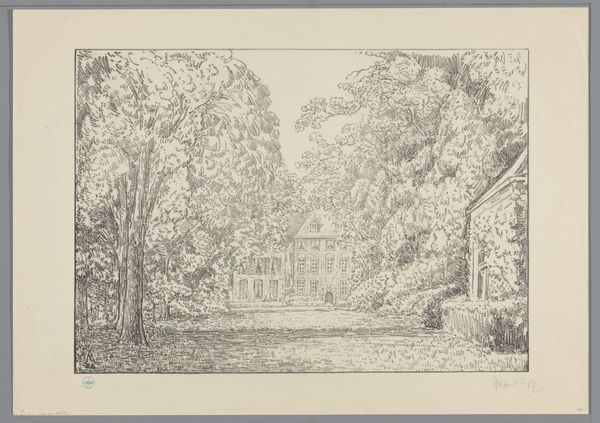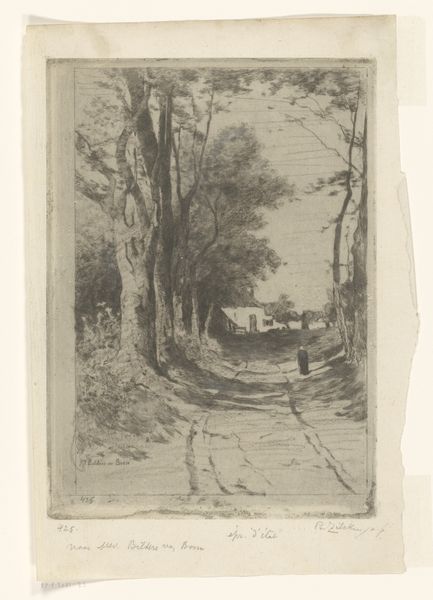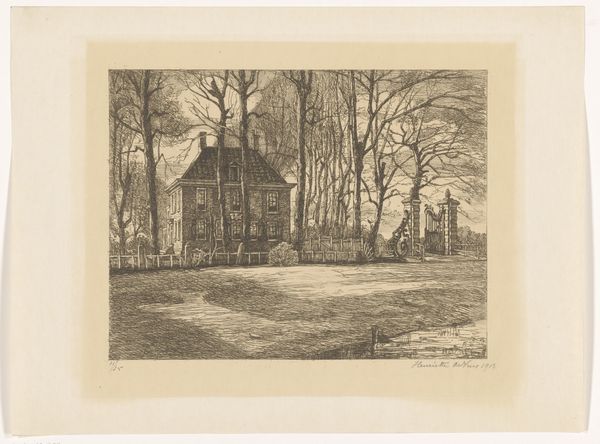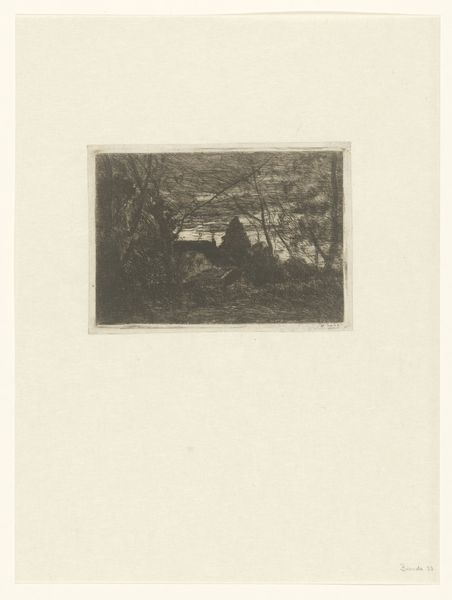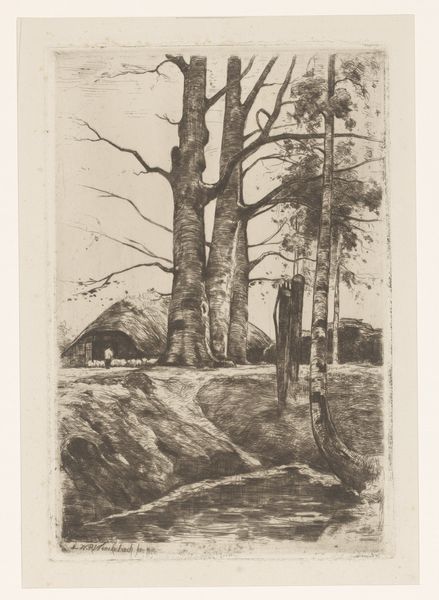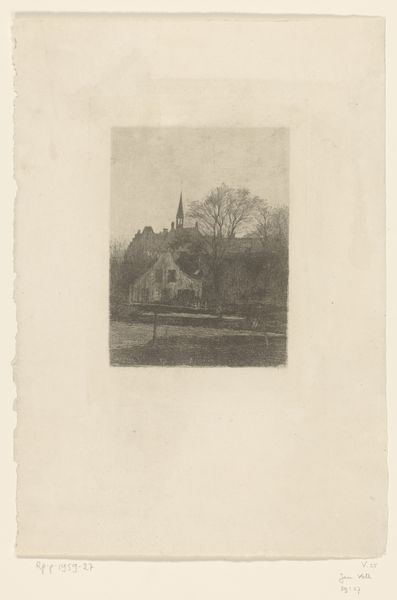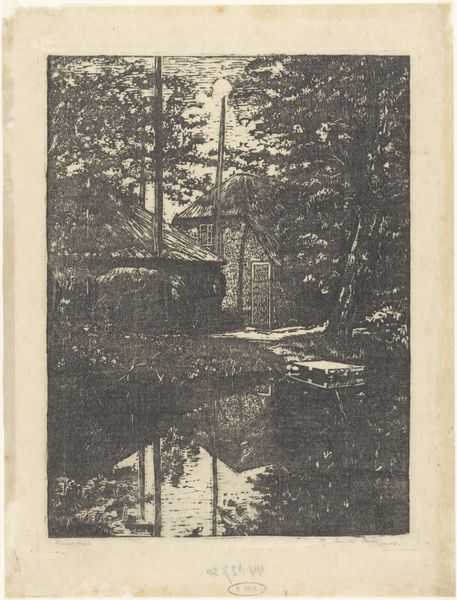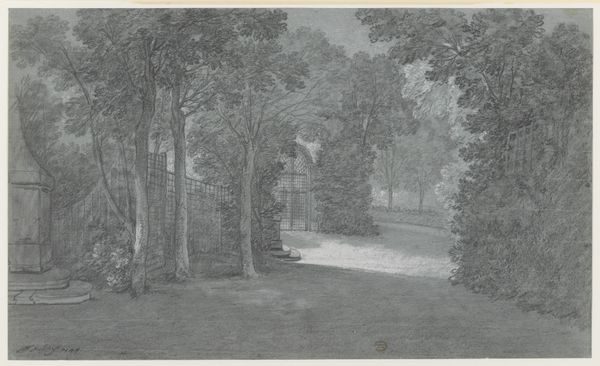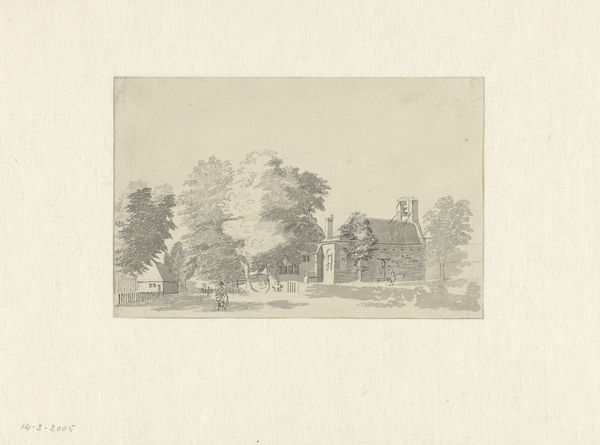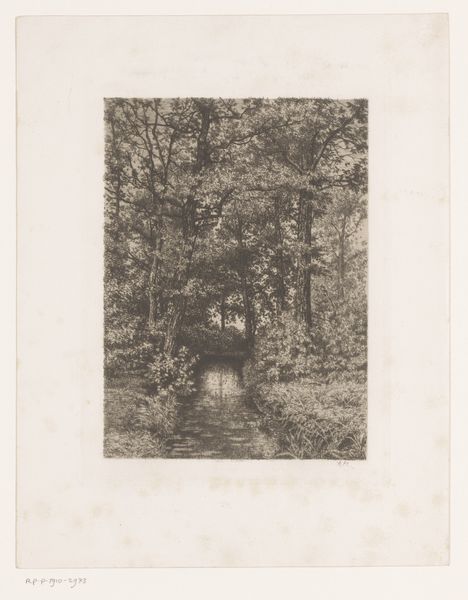
drawing, print, engraving
#
drawing
# print
#
landscape
#
geometric
#
cityscape
#
engraving
Dimensions: height 191 mm, width 126 mm
Copyright: Rijks Museum: Open Domain
Curator: Looking at this print from around 1890 to 1900 by Noach van der Waals, titled "Gezichten op de omgeving van Apeldoorn," what are your initial thoughts? Editor: It feels very self-consciously constructed, almost like a layered dreamscape. The monochrome gives it a nostalgic haze, but the multiple perspectives feel intentionally artificial. What strikes you? Curator: I find it interesting how he combines seemingly disparate images, linking them symbolically through landscape. The road, the house, the forest… It reminds me of earlier symbolic landscapes where the journey represents life's path, the house domestic stability, and the woods untamed nature. Editor: Right, these symbols resonate with a certain longing for order, for clarity. But the presentation complicates this – the "scroll" containing another vista adds a meta-level. It’s not a straightforward, romanticized vision of nature; it's nature mediated through representation. Does that connect to any particular social moment? Curator: Certainly, during this period, we see an increase in landscape art that also reflects industrialization and urbanization anxieties. Presenting these "views" feels almost like inventorying or mapping, laying claim to the land even as it changes around them. It acknowledges that viewing a landscape itself is a cultural act. Editor: I'm especially drawn to that circular inset—the crisp, classical-looking building amidst a softer, almost romantic landscape. It suggests an assertion of civilized order upon the natural world, perhaps tied to Dutch aspirations. The stark difference of tone from other parts is hard to ignore. Curator: Precisely. That contrast emphasizes how landscapes aren’t neutral scenes; they are coded with meaning, power dynamics, and idealized concepts. Consider too how engraving and printmaking allowed such imagery to be widely disseminated. That availability further reinforced dominant social and cultural ideals across Dutch society. Editor: Looking at it again, I'm left with this impression of a world caught between longing for a simple, harmonious past and an inescapable modernity. The scroll unrolling is a potent symbol of unfolding history itself, even as the other details reflect deep connection with this surrounding territory. Curator: Yes, Van der Waals created an interesting layered impression here that provides historical documentation, coded symbolic narratives, and the anxieties inherent with progress. Thank you for pointing out fresh aspects and implications.
Comments
No comments
Be the first to comment and join the conversation on the ultimate creative platform.
